Imagine wandering through ancient cities where each cobblestone street tells a story of centuries past.
From the grandeur of Rome’s Colosseum to the intricate beauty of Prague’s historic center, Europe’s heritage sites are a testament to the ingenuity and creativity of generations gone by.
But it’s not just about the famous landmarks – Europe is also home to hidden gems waiting to be discovered. From the tranquil beauty of the Wadden Sea to the enchanting allure of Matera’s cave dwellings, there’s always something new and exciting to explore.
Are you ready to embark on a captivating journey through the illustrious World Heritage Sites of Europe? Prepare to be whisked away on an enchanting journey through a rich tapestry of history, culture, and natural marvels that will leave you utterly spellbound.
So, grab your map and your sense of adventure, because we’re about to embark on a journey through Europe’s underrated UNESCO World Heritage Site
Table of Contents
ToggleEurope – Brief Introduction
Europe is a continent that is part of the larger landmass of Eurasia. It is located in the Northern and Eastern Hemispheres, and it is bordered by the Arctic Ocean, the Atlantic Ocean, the Mediterranean Sea, and Asia.
Europe has a long and rich history, culture, and diversity. It is the birthplace of ancient civilizations such as Greece and Rome, and the cradle of Christianity. It also experienced the Renaissance, the Enlightenment, the Industrial Revolution, and the World Wars.
Europe stands as a testament to the depth of human history and the beauty of our planet , with a staggering total of 545 UNESCO World Heritage Sites spread across its lands.
As we explore these UNESCO World Heritage Sites, we’ll uncover fascinating facts and figures, delve into the stories behind these remarkable locations, and marvel at the ingenuity and craftsmanship of our ancestors.
Welcome to Europe – where the past meets the present, and the wonders of the world await at every turn.
List of World Heritage Sites in Europe that are relatively underrated :
1. Rila Monastery, Bulgaria

Nestled amidst the scenic beauty of the Rila Mountains in Bulgaria, Rila Monastery stands as a testament to the country’s rich religious heritage. Renowned as one of the largest and most significant Eastern Orthodox monasteries in the world, it is a haven for pilgrims and travelers alike.
Location: Situated approximately 120 kilometers south of Sofia, the capital city of Bulgaria, Rila Monastery is perched at an altitude of around 1,147 meters above sea level. Surrounded by lush forests and pristine nature, it offers a tranquil retreat from the hustle and bustle of urban life.
Ideal Time for Pilgrimage: The best time to visit Rila Monastery is from May to September when the weather is pleasant, and the region is accessible. During these months, visitors can explore the monastery’s ornate architecture, lush gardens, and sacred shrines at their leisure.
Cultural Immersion: Immerse yourself in the vibrant tapestry of Rila Monastery’s daily rituals and traditions. Attend the monastery’s prayer ceremonies, where the melodious chants of monks fill the air, creating an atmosphere of profound serenity and devotion. Don’t miss the opportunity to explore the monastery’s museum, which houses a rich collection of religious artifacts, manuscripts, and icons dating back centuries.
2. Archaeological Ensemble of Tárraco, Spain
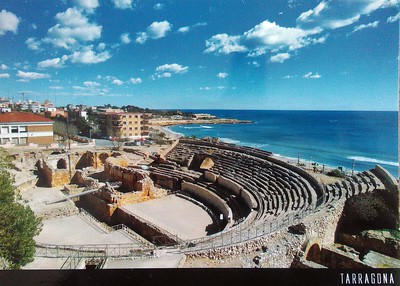
Tucked away in the picturesque landscapes of Tarragona, Spain, the Archaeological Ensemble of Tárraco awaits, inviting travelers to delve into the ancient history of this captivating region.
Location: Situated along the northeastern coast of Spain, Tarragona is home to the Archaeological Ensemble of Tárraco, a UNESCO World Heritage Site. This remarkable ensemble encompasses the remains of an ancient Roman city, offering a fascinating glimpse into Spain’s rich cultural heritage.
Ideal Time for Exploration: The optimal time to explore the Archaeological Ensemble of Tárraco is during the spring and summer months, from May to September. With pleasant weather and longer daylight hours, visitors can fully immerse themselves in the history and beauty of this archaeological marvel.
Cultural Immersion: Step back in time as you wander through the well-preserved ruins of Tárraco, once a thriving Roman metropolis. Marvel at the intricate architecture of ancient amphitheaters, forums, and temples, each bearing witness to the city’s storied past. Don’t miss the opportunity to engage in the vibrant tapestry of Tárraco’s daily life, from attending archaeological exhibitions to participating in guided tours that unveil the secrets of this ancient civilization.
3. Wadden Sea, Netherlands, Germany, Denmark
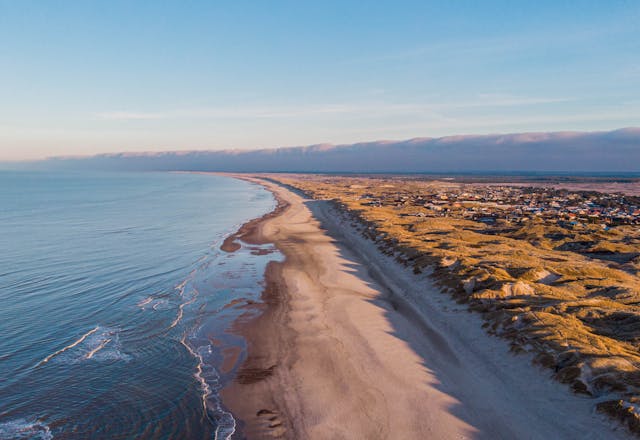
Nestled along the coastlines of the Netherlands, Germany, and Denmark, the Wadden Sea stands as a testament to the wonders of nature and the importance of conservation efforts across borders.
Location: Spanning approximately 9,000 square kilometers, the Wadden Sea stretches along the North Sea coast of the Netherlands, Germany, and Denmark. This UNESCO World Heritage Site encompasses a unique ecosystem of tidal flats, salt marshes, and barrier islands, making it one of the largest intertidal systems in the world.
Ideal Time for Exploration: The best time to explore the Wadden Sea is during the summer months, from May to September, when the weather is mild, and migratory birds flock to the region. Visitors can embark on guided tours, boat excursions, or nature walks to experience the diverse flora and fauna of this dynamic landscape.
Cultural Immersion: Immerse yourself in the rich cultural heritage of the Wadden Sea region as you discover its traditional fishing villages, historic lighthouses, and centuries-old maritime traditions. Engage with local communities and learn about their efforts to preserve and protect this UNESCO World Heritage Site for future generations.
4. Caves of Aggtelek Karst and Slovak Karst, Hungary, Slovakia

These caves are renowned for their intricate networks of passages, chambers, and stunning formations such as stalactites and stalagmites, created over millions of years by the slow dissolution of limestone by underground rivers.
Location: Spanning across the border of Hungary and Slovakia, the Caves of Aggtelek Karst and Slovak Karst form a UNESCO World Heritage Site renowned for its stunning subterranean landscapes. Located in the northeastern part of Hungary and southeastern part of Slovakia, this karst region boasts an intricate network of limestone caves, underground rivers, and breathtaking formations.
Ideal Time for Exploration: The ideal time to explore the Caves of Aggtelek Karst and Slovak Karst is during the warmer months, from May to September. Visitors can embark on guided tours led by experienced cave guides, allowing them to discover the hidden wonders of these underground realms while enjoying the comfortable temperatures of the season.
Cultural Immersion: Immerse yourself in the rich cultural heritage of the region as you delve into the history and significance of the Caves of Aggtelek Karst and Slovak Karst. Learn about the geological processes that shaped these extraordinary formations over millions of years and gain insight into the unique ecosystems that thrive within their depths.
5. Hattusa, Turkey
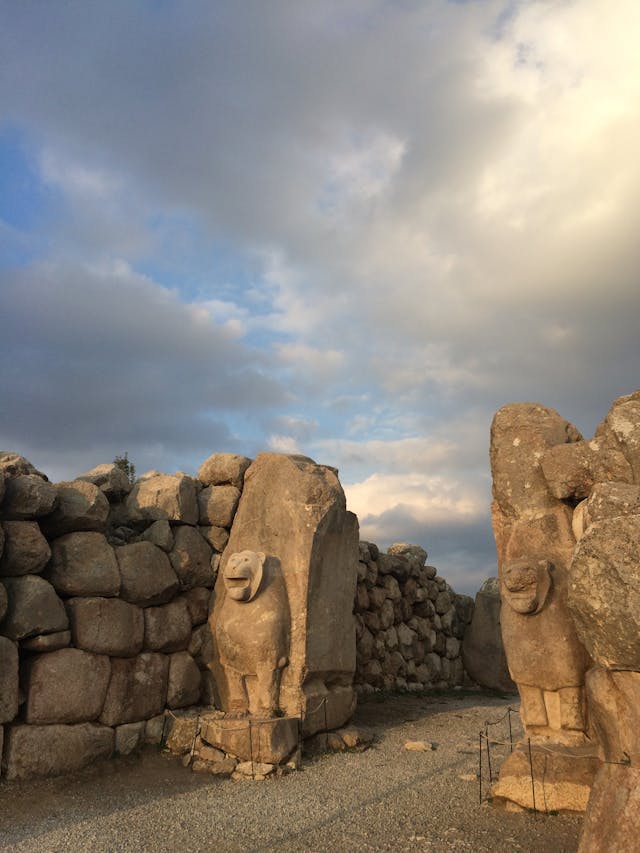
Situated in central Turkey, Hattusa stands as a testament to the ancient Hittite civilization and its remarkable capital city. As a UNESCO World Heritage Site, Hattusa offers a fascinating glimpse into the history and culture of this once-thriving empire.
Location: Located near modern-day Boğazkale, in the Çorum Province of Turkey, Hattusa sits amidst the rolling hills of Anatolia, approximately 200 kilometers east of Ankara, the capital city of Turkey.
Historical Significance: Hattusa was the capital of the Hittite Empire during the Late Bronze Age, flourishing from around 1600 to 1200 BCE. It served as the political, economic, and cultural center of the empire, boasting impressive fortifications, temples, and administrative buildings.
Key Features: Visitors to Hattusa can explore the remnants of its ancient city walls, which once surrounded the bustling metropolis, as well as the Great Temple, dedicated to the Hittite Storm God. The Yazılıkaya rock sanctuary, adorned with intricate reliefs depicting Hittite deities and kings, offers further insight into the religious practices of the time.
Cultural Immersion: Immerse yourself in the rich history and culture of the Hittite civilization as you wander through the ruins of Hattusa. Guided tours provide valuable insights into the daily life of its inhabitants, while onsite museums showcase artifacts unearthed from archaeological excavations.
6. The Historic Centre of Évora, Portugal
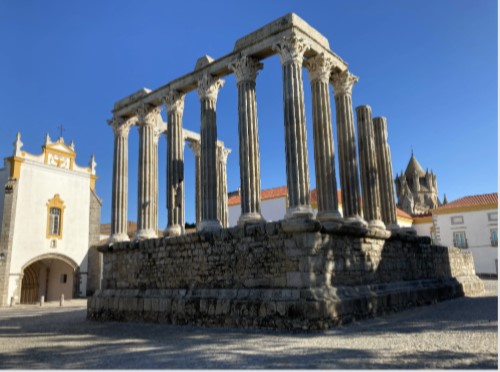
Historic Centre of Évora offers a captivating journey through Portugal’s past, where ancient traditions and modern life intertwine seamlessly.
Location: Situated in the picturesque Alentejo region of Portugal, the Historic Centre of Évora is located approximately 130 kilometers east of Lisbon, the country’s capital.
Historical Significance: With roots dating back over two millennia, Évora has been inhabited by various civilizations, including the Romans and Moors. Its historic center is a well-preserved example of medieval and Renaissance architecture, showcasing the city’s importance as a political, religious, and cultural hub throughout the centuries.
Key Features: Visitors to the Historic Centre of Évora can explore iconic landmarks such as the Roman Temple of Évora, a well-preserved Corinthian-style temple dating back to the 1st century AD. The Cathedral of Évora, a stunning example of Gothic architecture, and the São Francisco Church, known for its intricate Baroque interior, are also must-see attractions.
Cultural Immersion: Immerse yourself in the vibrant atmosphere of Évora’s historic streets, lined with charming whitewashed houses, quaint cafes, and artisan shops. Explore the city’s rich cultural heritage through its museums, galleries, and traditional festivals, which celebrate everything from music and dance to local cuisine and crafts.
7. The Sassi and Park of the Rupestrian Churches of Matera, Italy
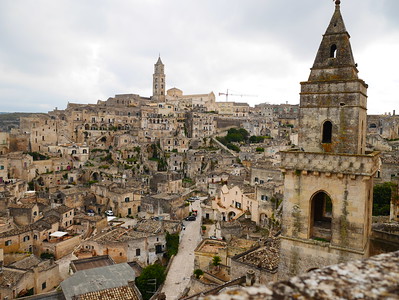
Matera’s ancient cave dwellings, known as “Sassi,” and its rock-hewn churches form a unique urban landscape with a fascinating history.
Location: Situated in the region of Basilicata, Matera is located in the southern part of Italy, approximately 65 kilometers inland from the Adriatic Sea.
Historical Significance: Matera’s Sassi districts are among the oldest inhabited settlements in Italy, with a history dating back over 9,000 years. Carved into the rugged landscape, the Sassi are a unique example of cave dwellings that were inhabited continuously from prehistoric times until the 20th century. The Rupestrian Churches, adorned with Byzantine frescoes and ancient religious artifacts, reflect Matera’s role as a center of Christian worship throughout the Middle Ages.
Key Features: Visitors to Matera can explore the labyrinthine streets and cave dwellings of the Sassi districts, where ancient homes, churches, and cisterns are carved into the soft limestone rock. The Rupestrian Churches, including the Church of San Pietro Caveoso and the Church of Santa Maria de Idris, offer a glimpse into Matera’s rich religious heritage.
Cultural Immersion: Immerse yourself in the timeless atmosphere of Matera’s historic districts, where traditional craftsmanship and centuries-old traditions are still alive today. Explore artisan workshops, sample local cuisine at family-run trattorias, and attend cultural events that celebrate Matera’s vibrant heritage.
8. The Trulli of Alberobello, Italy
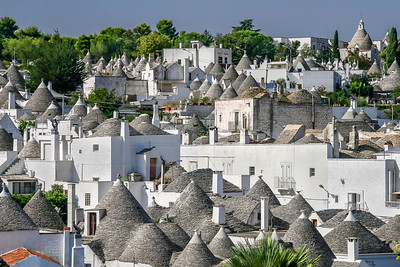
This small town in Puglia is famous for its picturesque Trulli houses, distinctive limestone dwellings with conical roofs, which create a charming and unusual architectural ensemble.
Location: Situated in the southern part of Italy, in the region of Puglia, Alberobello is located approximately 60 kilometers southeast of the city of Bari.
Historical Significance: The Trulli of Alberobello are traditional limestone dwellings with conical roofs, dating back to the 14th century. Originally built as temporary shelters by agricultural workers, the Trulli have become a symbol of the region and a testament to the ingenuity of its inhabitants.
Key Features: Visitors to Alberobello can explore the historic district of Rione Monti, where hundreds of Trulli line the winding streets, creating a picturesque labyrinth of whitewashed walls and cobblestone pathways. The Trullo Sovrano, a two-story Trullo converted into a museum, offers insight into the history and architecture of these unique structures.
Cultural Immersion: Immerse yourself in the timeless charm of Alberobello as you wander through its narrow streets, admiring the Trulli and interacting with local artisans and craftsmen. Explore traditional workshops where artisans create handmade pottery and other crafts, and sample local delicacies at family-run trattorias.
9. The Mining Cultural Landscape of Erzgebirge/Krušnohoří, Germany, Czech Republic
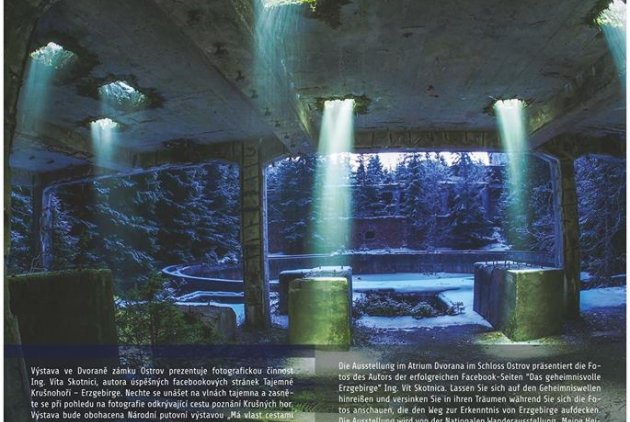
This transboundary site showcases the cultural heritage of mining in the Ore Mountains, including historic towns, mining landscapes, and industrial infrastructure.
Location: The Erzgebirge/Krušnohoří region straddles the border between Germany and the Czech Republic, stretching across the Ore Mountains in central Europe.
Historical Significance: For centuries, the Erzgebirge/Krušnohoří region was one of the most important mining areas in Europe, known for its abundant deposits of silver, tin, and other precious metals. The mining activities that took place here had a profound impact on the development of mining technology, trade routes, and cultural exchange throughout the region and beyond.
Key Features: Visitors to the Mining Cultural Landscape of Erzgebirge/Krušnohoří can explore a variety of historic sites, including former mining towns, industrial complexes, and underground mines. Highlights include the historic town of Freiberg in Germany, known for its well-preserved medieval architecture and mining heritage, and the town of Kutná Hora in the Czech Republic, home to the famous Sedlec Ossuary, or “Bone Church.”
Cultural Immersion: Immerse yourself in the rich cultural heritage of the Erzgebirge/Krušnohoří region as you explore its historic towns, museums, and cultural events. Learn about the lives of miners and their families through interactive exhibits and guided tours, and discover the traditions and folklore that have been passed down through generations.
10. The Vineyard Landscape of Piedmont: Langhe-Roero and Monferrato, Italy

Recognized for its outstanding wine-growing traditions, this region features picturesque vineyards, charming villages, and historic wineries.
Location: Situated in the Piedmont region of Italy, the Vineyard Landscape of Langhe-Roero and Monferrato encompasses the rolling hills and valleys of the Langhe and Roero regions, as well as the Monferrato area, extending from the outskirts of Turin to the provinces of Asti, Cuneo, and Alessandria.
Historical Significance: The vineyard landscape of Langhe-Roero and Monferrato has a long history of winemaking dating back to ancient times. The region’s unique terroir, characterized by its limestone soils, mild climate, and diverse microclimates, provides ideal conditions for cultivating a variety of grape varietals, including Nebbiolo, Barbera, and Moscato.
Key Features: Visitors to the Vineyard Landscape of Langhe-Roero and Monferrato can explore charming medieval villages, historic castles, and ancient vineyards that dot the countryside. Highlights include the picturesque town of Barolo, renowned for its eponymous wine, and the hilltop village of Barbaresco, home to prestigious wineries and panoramic views of the surrounding vineyards.
Cultural Immersion: Immerse yourself in the rich cultural heritage of Langhe-Roero and Monferrato as you discover the traditions and craftsmanship of winemaking through guided tours, wine tastings, and visits to local cellars and vineyards. Experience the warmth and hospitality of the region’s inhabitants as you sample traditional Piedmontese cuisine and participate in local festivals and events celebrating the harvest season.
11. The Historic Centre of Sighişoara, Romania
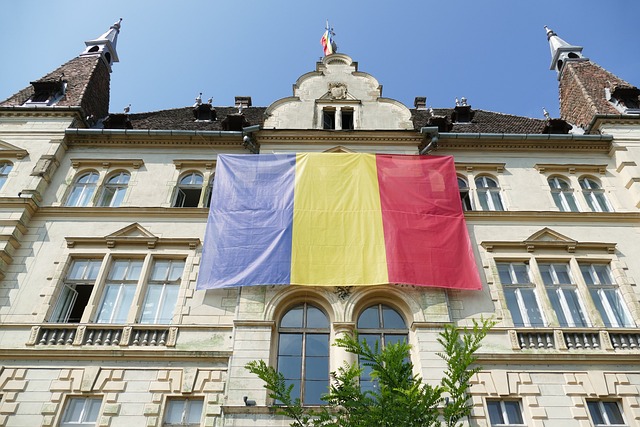
Historic Centre of Sighişoara offers a journey back in time to the medieval era, where the legacy of the Saxons and the myths of Dracula come to life amidst the cobblestone streets and historic landmarks of this enchanting town.
This well-preserved medieval citadel is known for its colorful buildings, cobblestone streets, and the birthplace of Vlad the Impaler, inspiring the legend of Dracula.
Location: Situated in the historic region of Transylvania, Sighişoara is located in the central part of Romania, approximately 270 kilometers northwest of the capital city, Bucharest.
Historical Significance: The Historic Centre of Sighişoara is steeped in history, with origins dating back to the 12th century. Founded by German craftsmen and merchants known as the Saxons, the town grew into a thriving medieval citadel, known for its fortified walls, towers, and cobblestone streets. Sighişoara is also famous for being the birthplace of Vlad III, commonly known as Vlad the Impaler or Dracula.
Key Features: Visitors to the Historic Centre of Sighişoara can explore the well-preserved medieval citadel, which is surrounded by imposing fortified walls and watchtowers. Highlights include the iconic Clock Tower, the Church on the Hill with its remarkable frescoes, and the colorful houses lining the narrow streets of the old town.
Cultural Immersion: Immerse yourself in the rich cultural heritage of Sighişoara as you wander through its historic streets, admiring the medieval architecture and soaking in the atmosphere of this charming town. Explore local museums and art galleries, attend cultural events and festivals, and sample traditional Romanian cuisine at local restaurants and cafes.
These World Heritage Sites offer travelers the opportunity to explore lesser-known yet culturally and historically significant destinations across Europe.
Frequently Asked Questions
Which European country has highest number of UNESCO World Heritage sites?
Italy holds the record for the highest number of UNESCO World Heritage sites. Italy boasts a diverse range of cultural and natural landmarks, with a total of 58 sites inscribed on the UNESCO World Heritage List.
How many countries are in UNESCO?
UNESCO has 193 member states, which are sovereign countries that have joined the organization to collaborate on initiatives related to education, science, culture, and communication.
What is the oldest World Heritage Site?
The Galapagos Islands in Ecuador are considered one of the oldest UNESCO World Heritage Sites. They were inscribed on the World Heritage List in 1978 due to their exceptional biodiversity and evolutionary significance.
Conclusion
In conclusion, the underrated UNESCO World Heritage Sites in Europe may not always be the most famous or widely recognized, but they are no less deserving of our attention and admiration.
These hidden gems offer unique insights into Europe’s diverse cultural, historical, and natural heritage, often with fewer crowds and a more intimate atmosphere.
By exploring these lesser-known sites, travelers have the opportunity to uncover hidden treasures, discover untold stories, and forge meaningful connections with the past.
From ancient ruins to breathtaking landscapes, each of these underrated sites contributes to the rich tapestry of Europe’s heritage and deserves to be celebrated and preserved for generations to come.
But here’s the thing – these sites aren’t just about pretty views. They’re like time capsules, preserving stories and traditions that date back centuries. You can feel the history come alive as you wander through ancient streets or gaze up at towering monuments.
So, next time you’re planning a trip to Europe, don’t forget to add these underrated UNESCO sites to your list.
Trust me, you won’t regret it. It’s like discovering hidden gems with a friend – and that friend is me, giving you all the insider tips!


